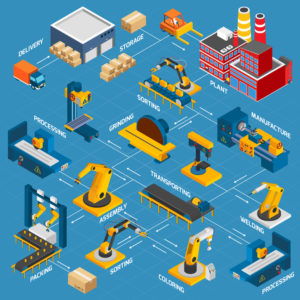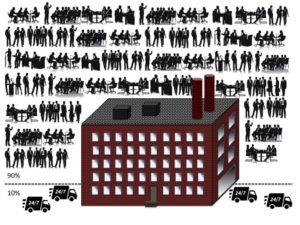Every company I encounter is  trying to do more with less. I know numerous executives and managers who seem to acquire additional titles as often as they receive year-end bonuses. Employees at every level juggle To Do lists more prolific than rabbits. Unbelievably, most accept this fate and persevere the best they can. Since they’ve been told repeatedly to “work smarter, not harder,” many, especially the high achievers, assume responsibility for their long hours and blame themselves for not being smart enough to avoid working so hard. In their spare time, they surf the Internet hoping to find the holy grail — that magical tip that will finally end their suffering and let them please their bosses while also enjoying their evenings and weekends once again.
trying to do more with less. I know numerous executives and managers who seem to acquire additional titles as often as they receive year-end bonuses. Employees at every level juggle To Do lists more prolific than rabbits. Unbelievably, most accept this fate and persevere the best they can. Since they’ve been told repeatedly to “work smarter, not harder,” many, especially the high achievers, assume responsibility for their long hours and blame themselves for not being smart enough to avoid working so hard. In their spare time, they surf the Internet hoping to find the holy grail — that magical tip that will finally end their suffering and let them please their bosses while also enjoying their evenings and weekends once again.
Is it really possible to improve productivity at this point? Absolutely!
So why isn’t it happening? The answer is simple. There are three kinds of productivity improvements and the universe of programs, workshops, books, articles, videos, and consultants only address two of the three. The third is almost completely neglected and will likely surprise you unless you’re one of my regular followers, in which case you know I’ve been beating this drum for more than a decade.
1. Production Productivity
The first category of productivity improvements is production productivity. Whether you manufacture products or deliver services, you have probably already streamlined your production capability. This is the realm of lean manufacturing. The leaner you are, the smoother your processes, the fewer your mistakes and rework, and the less waste of any kind. Raw materials and parts are obtained only as needed and flow like clock work as you add value and deliver the goods to delighted customers. The goal is to eliminate any activity for which customers are unwilling to pay. Every organization can benefit from this kind of productivity improvement and many have, perhaps to the point of diminishing returns. If you still need help, resources are abundant.
2. Individual Productivity
Personal productivity is the bailiwick of time management programs. But, of course, you can’t manage time. Time just keeps ticking away. The key to personal productivity begins with self awareness, clarity of purpose, and clarity of process. From there, you need to Choose, Start, Focus, and Finish. Highly productive individuals quickly decide what to do, find the shortest path, and get it done.
3. Interaction Productivity
Interaction productivity is the third category. It governs all the time employees at every level spend planning, meeting, deciding, re-deciding, persuading, emailing, delegating, evaluating, communicating, reporting, reviewing, juggling priorities, solving problems, and more. Some organizations estimate that this category consumes up to 90% of total workforce time. It certainly consumes 90% of employee compensation dollars since the farther you are from the production processes, the more you are paid and the more time you spend thinking and interacting and not producing value for which customers are willing to pay.
Here in lies your single greatest opportunity to improve productivity and the area most neglected.
The key to interaction productivity is shared clarity – shared clarity of purpose, shared clarity of process, and shared clarity of roles. I’m talking about a whole new level of clarity. No more wandering conversations and competing agendas. It requires new ways of thinking, new ways of speaking, and new ways of interacting. Most people think they are clearer than they are. True shared clarity:
- Involves speaking The Language of Outcomes and eliminating Treadmill Verbs™ like report, communicate, review, and evaluate that have no destination.
- Creates discernible progress where outcomes emerge from a logical series of intermediate outcomes rather than from disjointed, weaving conversations.
- Establishes an environment that maximizes everyone’s ability to contribute effectively.
- Eliminates the need for people to split their attention between trying to figure out where the conversation is going, trying to control the conversation, and trying to find the right moment to speak up.
- Unleashes the talent of introverts, new-comers, and other “outsiders” because they will no longer be waiting for Godot — the appropriate moment to speak.
- Makes progress and avoiding detours as easy as pointing out to someone during a game that he skipped your turn. And this is true regardless of rank, power, politics, or personality disorders.
If you are serious about improving productivity, you absolutely must start seeing the lack of clarity that is sucking up your profits every minute of every day. It is only after you start to see it that you can learn how to create the clarity that drives high performance.
This article originally appeared on Forbes.com on July 10th, 2016.


Comments are closed.